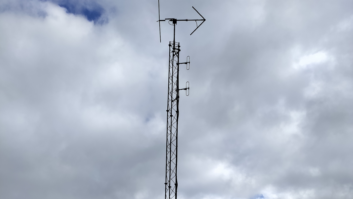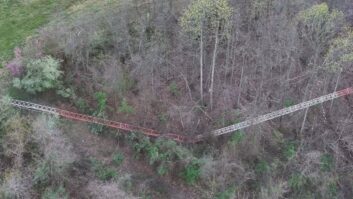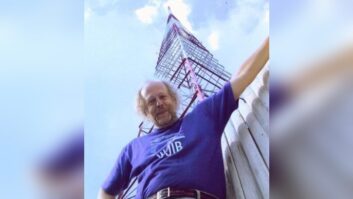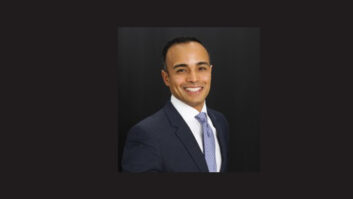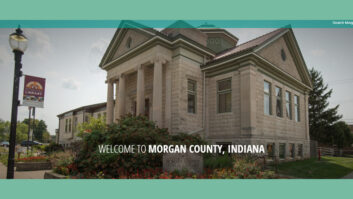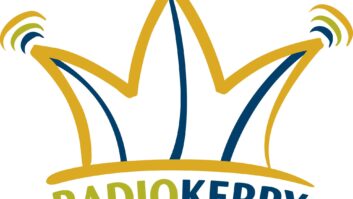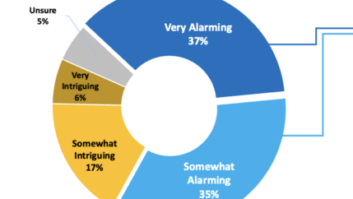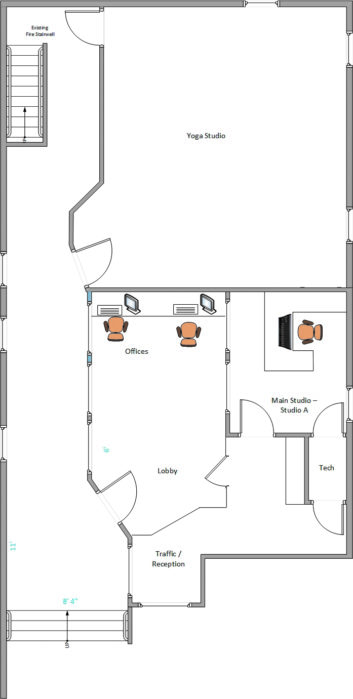
WDNP(LP) went on the air in Dover-New Philadelphia, Ohio, on July 13, 2015. Five years later, this little LPFM has continued to grow.
Being in a small market with four commercial stations and two full-power noncoms has been an advantage. The fact that signals from a larger market (Canton and Akron) penetrate the county could have been a little more of a concern; but the initial focus of the station was to fill a void in programming, with the added element of hyperfocus on localism and being a real part of the community.
This has proven to be the right thing to do as the station holds a 6.1 rating and is near the very top of the 14 rated stations in the market.
That success has translated to strong support not just from underwriters but from listeners, donors and organizations who recognize the station as a nonprofit with a mission to support all the other nonprofits of the area as “their voice.” And to the listeners, DNP 102.3 “sounds” like any full-power station with strong imaging and playing “hits all day, rock all night, and oldies and specialty shows on the weekend.”
For five years, this slogan (and “your hometown station”) have been the foundation of growth.
GROWING PAINS
The station started as a studio, transmitter “room” (rack in closet with glass door facing the control room), reception area and small office that doubled for editing areas for content). The growth of volunteers and the huge increase in production has taxed the tiny studio and has made it necessary for volunteers to work at midnight or overnight to produce content or even voice-track a show.
The problem of too many people and too few resources is a nice problem to have!
The station started the process of improvements two years ago, planning to add an additional production studio, but it quickly became apparent that the community had bigger requests than a single additional studio could support. With this in mind, we took it to “Phase II,” and that would include a major amount of significant upgrades.
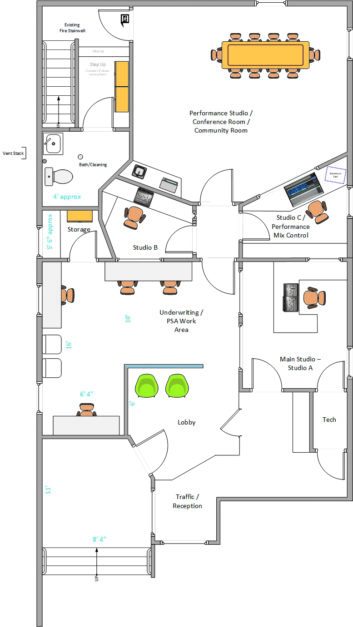
The upgrades included increasing the office/work area size to accommodate the PD, plus numerous volunteers. And with many guests arriving to be a part of live shows like “Gimme That Shu,” we had to be able to give a good impression to the numerous listeners that were finding their way into our office and studio.
In addition to the office growth, a production studio (B) would be added along with a multitrack studio (C) for more complex editing and production. The big addition would be the very necessary large space to hold volunteer meetings (which now numbered more than 25 people), but this space would be far more than a meeting area. The new area would be designated the Performance Studio/Conference/Community Room.
Since DNP has an all-volunteer organization with no paid staff, the board supported the idea of creating space that our small nonprofit could allow other small (or smaller) nonprofits to use at no cost. As a nonprofit, WDNP (or Dover/New Philadelphia Educational Broadcasting) has been fortunate to continue to grow and have great support. It is the intent to share that blessing with other nonprofits who might not have a place where they can meet, so sharing our community room aspect of the performance studio was added.
But that performance studio with a digital multitrack room was going to be pushed even further. In a rural county of about 90,000 people, the station felt that giving local musicians a place to record CDs or even perform live on-the-air would be something that would take DNP to the next level.
So the design allows musicians to create music. And since DNP wanted to relaunch “Saturday Night Live & Local,” a live music show Saturday nights from 10 p.m. to midnight, creating this new performance space would allow us to do what we couldn’t before, which was to have five or six band members together to perform live. Previously, two or three were in our main studio, and another two or three were miked out in the office with cables running into that studio. The show sounded great, but very difficult to manage in that scenario.
[LPFM operators shouldn’t be afraid to ask for help]
So we cut to where things are today. Over the past few weeks, the remodeling has started and things underway for Phase 2. The office size is increased, new studios framed and insulated and the shell is nearly complete. Drywall is being finished shortly and doors installed.

To create a broadcast-quality studio, things were done in a less-than-traditional method, yet my own experience working with some incredible people (including acousticians) allowed the design of primary walls between the performance studio and studios B and C to be double walled with mineral wool in each wall, and the walls isolated from each other with foam board between them. Truly, one wall has no contact with the inner wall. As high-priced acoustic doors aren’t possible in a “budget environment,” outdoor doors and windows that are double-paned and insulated with argon-filled gas serve to provide excellent acoustic isolation between areas.
The pictures show the original WDNP and the new DNP with Phase 2. To prep for the necessary cabling, three 2-inch conduits were run inside the interior wall to allow cables to chase above the ceiling. As the ceilings in this original building are 15 feet, a standard height studio allows for six feet of storage above each studio. So in the sound-lock hallway between each studio, a heavy (400-pound rated) pull-down ladder was added.
To give us a unique and unusual space, the station opted to create a “loft” (of sorts) above Studio C so guests/groupies/friends of bands could actually sit up in that “cozy” area and watch their bands perform … and even be a part of a “live audience.” Later we may add a small spiral staircase up to this loft from the performance studio side of the wall.
What comes next is a split zone, low-noise HVAC system to each studio. I’ve done this before with KERA(FM) in Dallas, and the noise level of these systems is acceptable (and surprisingly quiet) since they use low velocity fans that run very slow and quiet but only ramp up in heavy conditions (still, at a low volume).
HARDWARE
Finally, the equipment! When all the area is fully prepped and HVAC ready, the consideration of adding equipment to Studio B and Studio C made one thing very clear: Staying with traditional point-to-point wired audio consoles (whether analog or digital) made little sense. For only a very slight increase in cost, the station could go full AoIP and network the whole thing, greatly simplifying all aspects of installation.
Which system is still to be determined as there are a number of good manufacturers with excellent products out there. It will need to be something “in our price range,” but that doesn’t exclude much but the highest “major market-type” AoIP systems. With the primary air studio A and the production studio B being AoIP, it will only make sense to take that digital multitrack system into a similar world, so a board like the PreSonus Live32 is being considered. The “musician’s world” includes things not native to radio, like AVB networking, but to interconnect a broadcast AoIP system with a multitrack digital “musician’s mixer/recorder,” the easy answer will simply be to bridge them with their AES digital interfacing to keep everything clean and digital.
There’s still a lot of work to go, but things are looking excellent for the future and growth of this small market station. And weighing in the fact that it’s an LPFM with an ERP of 100 watts makes it an even sweeter success story. The station certainly hopes the FCC considers small rural LPFMs for a future 250-watt upgrade, not necessarily to increase coverage as much as giving a stronger signal in the six miles around the station, featuring better signal penetration into local factories and offices.
The author is a regular contributor to Radio World. He has written about WDNP(LP) at several stages of its conception, launch and growth.





